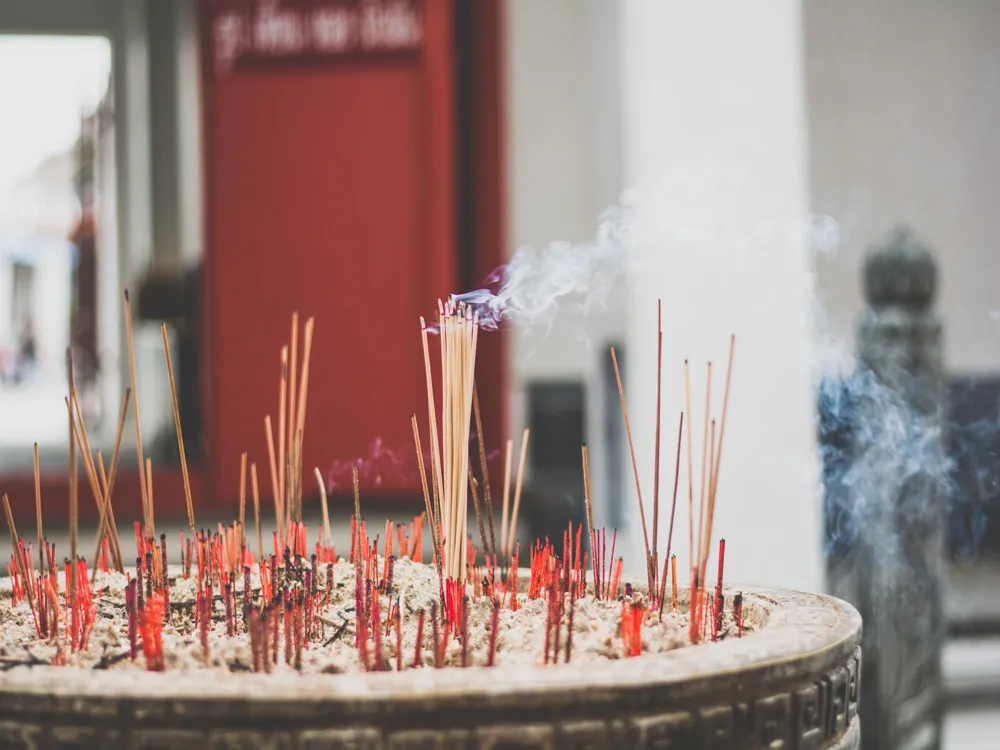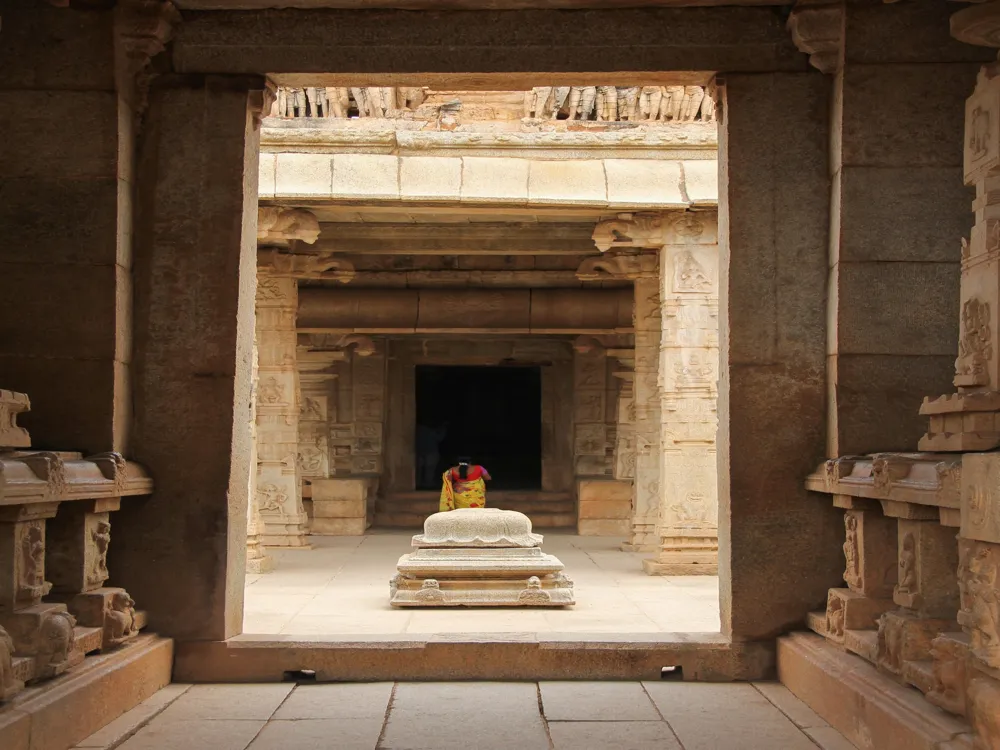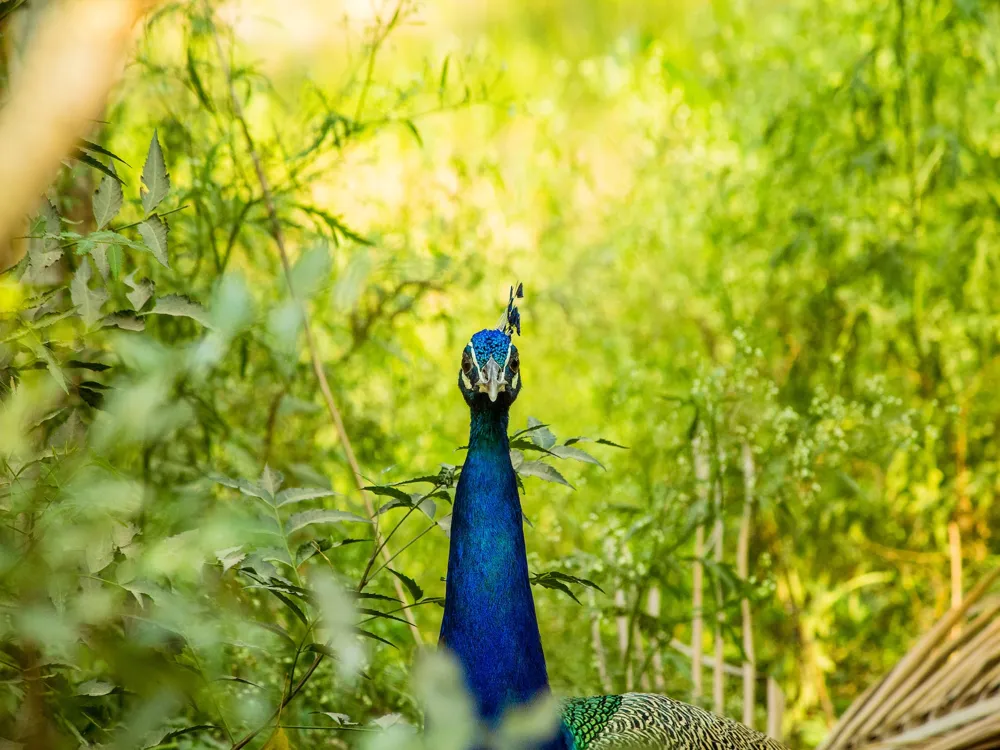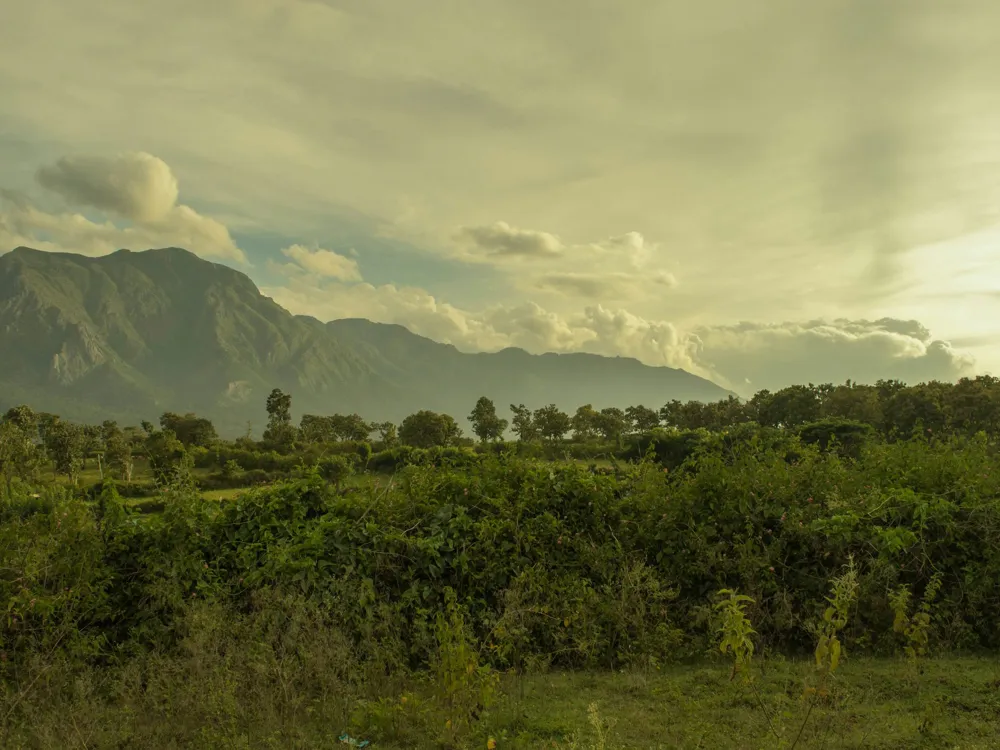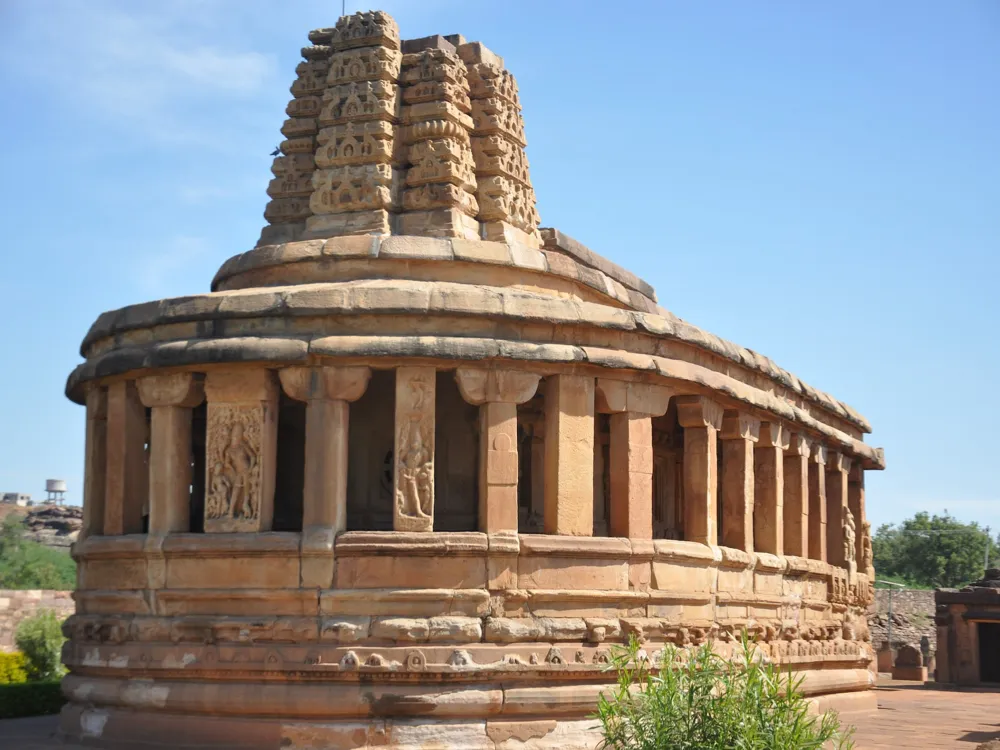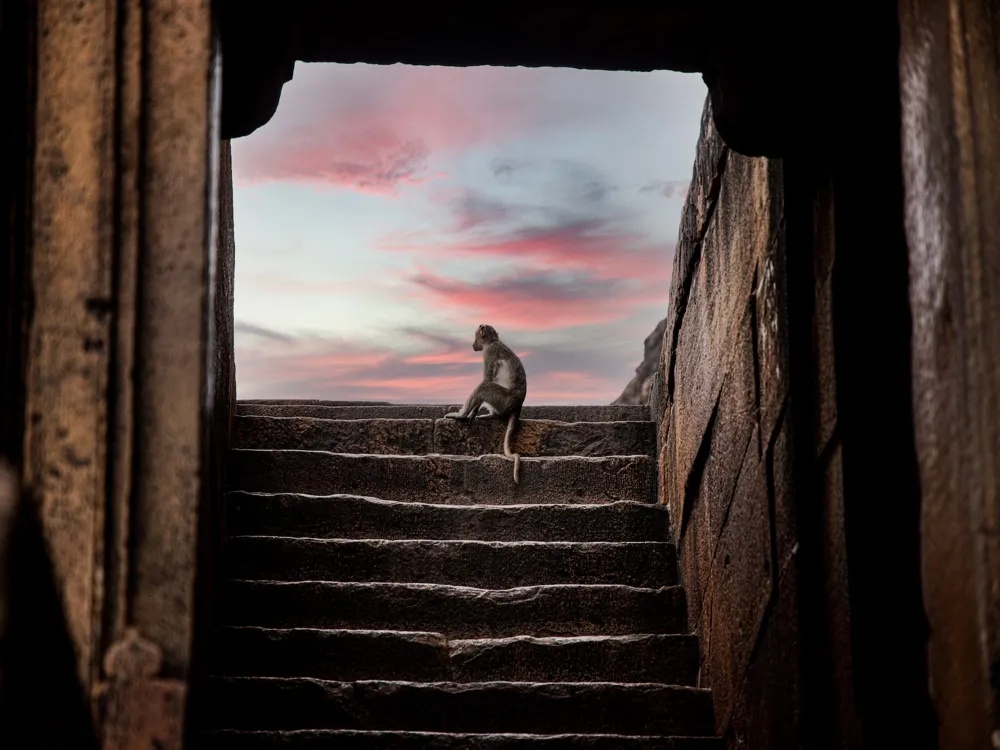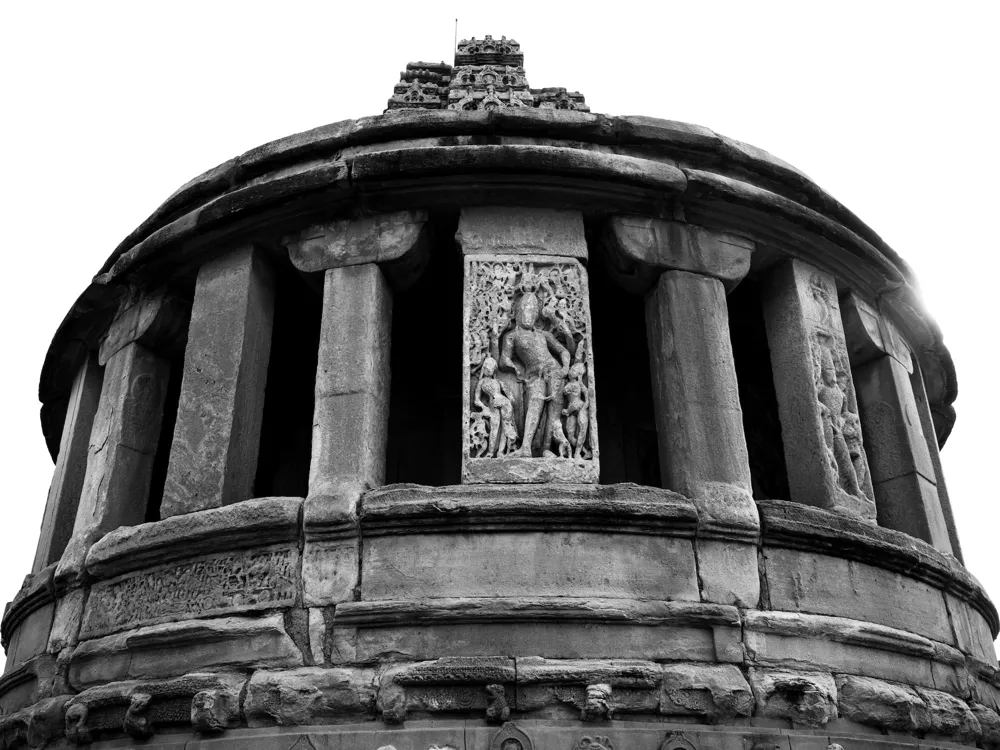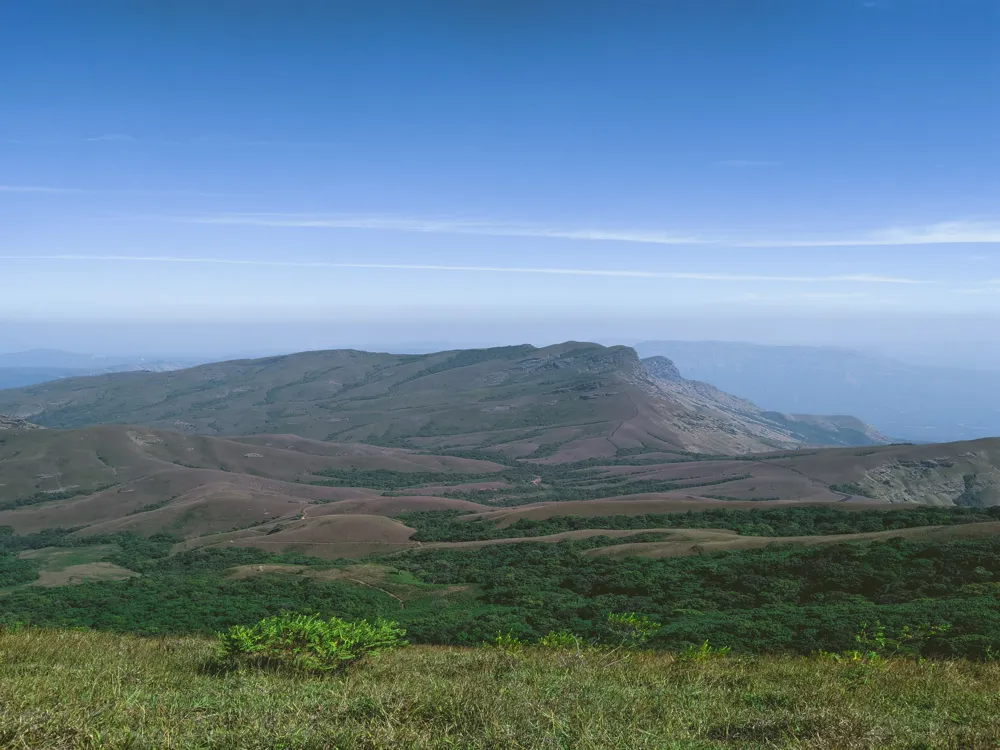Matanga Hill, a serene and majestic hillock located in the ancient city of Hampi in Karnataka, India, stands as a testament to the region's rich cultural and historical legacy. Hampi, a UNESCO World Heritage Site, is renowned for its vast ruins that were once part of the Vijayanagara Empire, one of the largest Hindu empires in Indian history. Matanga Hill, not only offers breathtaking panoramic views of Hampi's ruins and landscapes but also holds a significant place in Indian mythology and history.
According to Hindu mythology, Matanga Hill is named after Sage Matanga, a revered sage in Hindu scriptures. It's believed that this hill was his abode and a place of his intense meditation. The hill's connection to mythology adds a layer of spiritual significance, attracting not only history enthusiasts but also those seeking spiritual solace.
The climb to the summit of Matanga Hill is an experience in itself. Visitors are greeted with a diverse array of flora and fauna, alongside remnants of ancient architecture that dot the hillside. The ascent culminates at the Veerabhadra Temple, perched at the hill's peak. This temple, though modest in size, offers an unobstructed view of the sunrise and sunset, making it a popular spot among photographers and nature lovers.
As you explore further, you'll encounter various structures and relics that narrate the story of Hampi's glorious past. Each stone and ruin on Matanga Hill tells a story, offering insights into the life and times of the Vijayanagara Empire. From the top, the view encompasses the Achyutaraya Temple, the Tungabhadra River, and the Virupaksha Temple, providing a stunning visual representation of Hampi's grandeur.
The historical significance of Matanga Hill is further enhanced by its strategic location. During the Vijayanagara Empire, it served as an important lookout point. The hill's elevation provided the empire's inhabitants with an early warning system against incoming invaders, playing a crucial role in the defense and surveillance of the kingdom.
Today, Matanga Hill is not just a symbol of Hampi's architectural and historical marvels but also a beacon of natural beauty. The hill transforms with the seasons, showcasing a diverse palette of colors and textures, from the lush greenery of the monsoons to the golden hues of the dry season. This ever-changing landscape makes Matanga Hill a year-round destination for tourists from around the world.
The architecture of Matanga Hill is a harmonious blend of natural topography and human ingenuity, reflecting the artistic and architectural prowess of the Vijayanagara Empire. The structures on and around the hill showcase a unique blend of Dravidian and Indo-Islamic styles, characteristic of the Vijayanagara period.
The most prominent architectural feature on Matanga Hill is the Veerabhadra Temple. This temple, though small, is an excellent example of Vijayanagara architectural style. It features a Garbhagriha (sanctum sanctorum), a small Mukha Mandapa (entrance hall), and typical temple architecture elements like pilasters and carvings of deities and mythological scenes.
Another notable feature is the stone steps leading to the hilltop. These steps, carved out of the hill's rocky terrain, show the ingenuity of the Vijayanagara architects in integrating their structures with the natural landscape. The path is lined with various smaller shrines and relics, each contributing to the hill's sacred ambiance.
At various vantage points along the climb, visitors can observe the ruins of ancient water storage systems. These tanks and aqueducts are a testament to the advanced engineering skills of the Vijayanagara Empire, which managed water resources efficiently in a region prone to seasonal fluctuations in water availability.
The architecture of Matanga Hill extends beyond its immediate boundaries, influencing the layout and design of surrounding structures. The hill's elevation provided a strategic advantage, influencing the positioning and orientation of various temples, markets, and administrative buildings in Hampi. The hill's presence is felt throughout Hampi, serving as a focal point that ties the city's architectural narrative together.
The fusion of the natural landscape with man-made structures on Matanga Hill is a hallmark of Vijayanagara architecture. This integration not only enhanced the hill's aesthetic appeal but also played a significant role in its spiritual and cultural significance. The architectural elements found on Matanga Hill are not just structures of stone but are embodiments of a rich historical and cultural legacy that continues to inspire and awe visitors to this day.
The ideal time to visit Matanga Hill is between the months of October and March when the weather is pleasant. Early mornings are perfect for catching the sunrise from the hilltop, while evenings offer spectacular sunset views.
Ensure you're wearing comfortable footwear as the climb can be steep and challenging in parts. Carry water and snacks, and remember to stay hydrated. It's also advisable to wear a hat and use sunscreen to protect against the sun.
While climbing, stay on the marked paths to ensure safety. Respect the natural environment and the historical significance of the site by not littering or causing damage to the structures.
Matanga Hill is a photographer's paradise, so bring your camera. However, be mindful of the cultural sensitivities, especially when photographing religious sites or local people.
Consider hiring a local guide who can provide insights into the hill's history and mythology. This can enrich your understanding and experience of the place.
Matanga Hill is easily accessible from the main town of Hampi. You can reach Hampi by various means:
Once in Hampi, Matanga Hill is within walking distance from the main Hampi Bazaar. You can also hire bicycles or mopeds, available for rent in Hampi, to explore the area at your own pace.
Overview of Matanga Hill, Hampi, Karnataka
Architecture of Matanga Hill
Tips When Visiting Matanga Hill
Best Time to Visit
Preparation for the Climb
Safety and Etiquette
Photography and Exploration
Local Guides and Tours
How To Reach Matanga Hill
Matanga Hill
Hampi
Karnataka
NaN onwards
View hampi Packages
Weather :
Label : Must Visit
Tags : Hills & Valleys
Time Required : 4 to 5 hours
Planning a Trip? Ask Your Question
Hampi Travel Packages
View All Packages For Hampi
Top Hotel Collections for Hampi

Private Pool

Luxury Hotels

5-Star Hotels

Pet Friendly
Top Hotels Near Hampi
Other Top Ranking Places In Hampi
View All Places To Visit In hampi
View hampi Packages
Weather :
Label : Must Visit
Tags : Hills & Valleys
Time Required : 4 to 5 hours
Planning a Trip? Ask Your Question
Hampi Travel Packages
View All Packages For Hampi
Top Hotel Collections for Hampi

Private Pool

Luxury Hotels

5-Star Hotels

Pet Friendly







